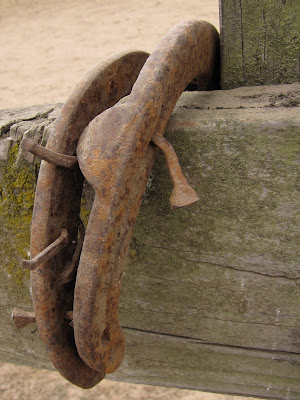
This phenomenal writers conference offers several tracks, but allows attendees to sit in on any workshop they desire. So I moved around from the Childrens/YA track to general fiction to genres and back again.
You heard it here first! "Dude Lit" is the official term for fiction directed at boys. At least that's what we coined during the panel on children's and YA books. What I took away from the panel of agents and editors is it's the content (that is, the story) that's important regardless of the format (traditional book, ebook, print on demand). And -- it is challenging to write for today's youth who are more sophisticated than most of the attendees were at the same age, with much shorter attention spans. Our books must be equally sophisticated and entertaining.
Colleen Houck and agent Alex Glass discussed her unusual route to publication of her
Tiger series of novels. After the typical round of rejections, Ms. Houck decided to self publish for Kindle via Amazon's Create Space (formerly Book Surge). She invested in professional editing services, book layout, and cover design before placing the first two ebooks of her series for sale. Her sales figures caught the interest of a film agent and then literary agent, Alex Glass. Now her series is slated for traditional publication and a movie deal is in the works. Quite the diversion from the "old way" of getting into print.
I next attended
Hallie Ephron's workshop: "Mystery Writing: A Crash Course." She clarified the difference between mysteries and thrillers. A mystery is a puzzle to be solved and the reader learns the facts along with the protagonist. In a thriller, the reader knows more than the characters which creates tension. Both genres have established conventions that create expectations from the agent, editor, bookseller, and reader. A book may contain elements of both mystery and thriller. My favorite take-away from this workshop was working out the secrets of all the characters. The sleuth, victim, and suspects all have secrets that must be investigated, some relevant to the mystery at hand and others sending the sleuth in the wrong direction. A body needn't appear immediately in a mystery, but the story should open with an "out of whack event" that throws the main character off balance to hook the reader. Classic mysteries may have had all the suspects collect in the drawing room for the sleuth's summation, but current mysteries should have a face-to-face confrontation between sleuth and villain.
The workshop on Crafting Fiction for Today's Marketplace by
Andrea Hurst and Gordon Warnock used participants' book titles, one-line pitches, and first sentences to illustrate what does and doesn't have the potential to grab the interest of a reader. Some we found intriguing immediately, others needed refining. Consider similarities for your story -- that is, authors, book titles, movie titles, or other familiar images that will give the listener an idea of what your story is like. Draft the back cover copy that would appear on your book. This exercise helps you focus your story presentation. You must hook your agent, the agent must hook an editor, and the editor must hook the editorial board with your story.
The last workshop I attended today was
Andrea Brown's "The Hot YA Category." Children's and young adult fiction is selling well even though adult fiction is faltering. Ms. Brown discussed her Five Ps of Children's/YA books: Passion, Product, Patience, Persistence, Promotion. As for the fundamentals, she outlined: character, theme, plot, point of view, structure, and resolution. As for trends in YA fiction, they tend to cycle every two years and dribble down from adult fiction. Getting a book into print can take years and by then the trend may be over -- so Ms. Brown recommends against writing specifically to a current trend. Interestingly enough, many successful YA authors have no children. Ms. Brown indicated successful writers in this category have a strong sense of the child in their heart
Bottom line for all of today's workshops: write
your book. Heed the advice received, but write the book you were meant to write.


 This statue welcomes people to the competition site at Hunter Creek Farm in Wilsonville, Oregon. Visit Lorenzo Ghiglieri's web site to see more of his fabulous work.
This statue welcomes people to the competition site at Hunter Creek Farm in Wilsonville, Oregon. Visit Lorenzo Ghiglieri's web site to see more of his fabulous work.














